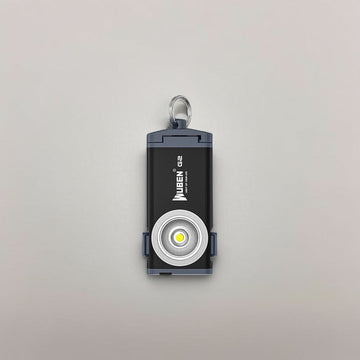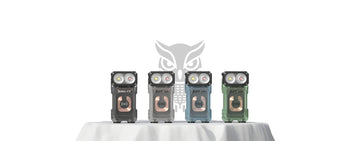
Flashlights have become indispensable tools in our daily lives, aiding us in navigating the darkness and providing an essential source of light in various situations. At the heart of every flashlight lies the battery, serving as the power source that fuels the illumination. Understanding the different types of flashlight batteries and their capabilities is vital for selecting the most suitable option to meet our diverse lighting needs.
Flashlights are compatible with various battery types, each offering distinct advantages and limitations. The most prevalent battery types used in flashlights include alkaline batteries, lithium batteries, and rechargeable batteries. These powerhouses differ in their chemical composition and performance, significantly impacting the flashlight's functionality and efficiency.
Alkaline Batteries
Alkaline batteries have long been a staple in flashlights due to their widespread availability and affordability. They utilize an alkaline electrolyte, typically a potassium hydroxide solution, and a zinc anode. One of the primary benefits of alkaline batteries is their ease of use, requiring no special charging equipment as they are disposable.
However, alkaline batteries suffer from voltage drops as they are depleted, leading to reduced brightness over time. They are also less capable of delivering high currents, making them less suitable for high-performance flashlights used in demanding situations.
Lithium Batteries
Lithium batteries have gained popularity for their exceptional performance and longer lifespan compared to alkaline batteries. These batteries employ lithium metal or lithium compounds as the anode material, resulting in a higher energy density. Consequently, flashlights powered by lithium batteries can produce brighter and more sustained light.
Moreover, lithium batteries have a lower self-discharge rate, meaning they retain their charge for longer periods when not in use. This feature makes them ideal for emergency situations and outdoor adventures.
However, it is essential to consider that lithium batteries can be more expensive than alkaline counterparts. Additionally, improper disposal of lithium batteries can have environmental implications due to their potential to release harmful chemicals.
Rechargeable Batteries
Rechargeable batteries offer a sustainable and cost-effective solution for flashlight enthusiasts. These batteries can be recharged hundreds of times, reducing waste and minimizing the environmental impact associated with disposable batteries.
Flashlights powered by rechargeable batteries are often equipped with charging ports or come with a separate charger. This feature allows users to conveniently recharge the batteries, ensuring they are always ready for use.
On the downside, rechargeable batteries may have slightly lower initial performance compared to disposable batteries, but this trade-off is usually outweighed by their long-term benefits.
Selecting the appropriate battery type largely depends on the intended use of the flashlight. For everyday tasks, such as household chores or casual camping, alkaline batteries may suffice. However, for demanding activities like hiking, search and rescue operations, or tactical applications, lithium batteries or rechargeable options are highly recommended due to their higher performance and reliability.
As conscientious consumers, it is crucial to evaluate the environmental impact of our choices. While alkaline batteries are widely available and easy to dispose of, their single-use nature contributes to landfill waste. Opting for rechargeable batteries or lithium batteries with longer lifespans promotes sustainability by reducing the number of discarded batteries.
In conclusion, the type of battery you choose for your flashlight can significantly influence its performance, longevity, and environmental impact. By understanding the unique characteristics of alkaline, lithium, and rechargeable batteries, you can make an informed decision that best suits your lighting needs and aligns with your commitment to sustainability. Illuminate your path with the power of knowledge and choose the battery type that will empower your flashlight to shine its brightest when you need it most.
Flashlights are compatible with various battery types, each offering distinct advantages and limitations. The most prevalent battery types used in flashlights include alkaline batteries, lithium batteries, and rechargeable batteries. These powerhouses differ in their chemical composition and performance, significantly impacting the flashlight's functionality and efficiency.
Alkaline Batteries
Alkaline batteries have long been a staple in flashlights due to their widespread availability and affordability. They utilize an alkaline electrolyte, typically a potassium hydroxide solution, and a zinc anode. One of the primary benefits of alkaline batteries is their ease of use, requiring no special charging equipment as they are disposable.
However, alkaline batteries suffer from voltage drops as they are depleted, leading to reduced brightness over time. They are also less capable of delivering high currents, making them less suitable for high-performance flashlights used in demanding situations.
Lithium Batteries
Lithium batteries have gained popularity for their exceptional performance and longer lifespan compared to alkaline batteries. These batteries employ lithium metal or lithium compounds as the anode material, resulting in a higher energy density. Consequently, flashlights powered by lithium batteries can produce brighter and more sustained light.
Moreover, lithium batteries have a lower self-discharge rate, meaning they retain their charge for longer periods when not in use. This feature makes them ideal for emergency situations and outdoor adventures.
However, it is essential to consider that lithium batteries can be more expensive than alkaline counterparts. Additionally, improper disposal of lithium batteries can have environmental implications due to their potential to release harmful chemicals.
Rechargeable Batteries
Rechargeable batteries offer a sustainable and cost-effective solution for flashlight enthusiasts. These batteries can be recharged hundreds of times, reducing waste and minimizing the environmental impact associated with disposable batteries.
Flashlights powered by rechargeable batteries are often equipped with charging ports or come with a separate charger. This feature allows users to conveniently recharge the batteries, ensuring they are always ready for use.
On the downside, rechargeable batteries may have slightly lower initial performance compared to disposable batteries, but this trade-off is usually outweighed by their long-term benefits.
Selecting the appropriate battery type largely depends on the intended use of the flashlight. For everyday tasks, such as household chores or casual camping, alkaline batteries may suffice. However, for demanding activities like hiking, search and rescue operations, or tactical applications, lithium batteries or rechargeable options are highly recommended due to their higher performance and reliability.
As conscientious consumers, it is crucial to evaluate the environmental impact of our choices. While alkaline batteries are widely available and easy to dispose of, their single-use nature contributes to landfill waste. Opting for rechargeable batteries or lithium batteries with longer lifespans promotes sustainability by reducing the number of discarded batteries.
In conclusion, the type of battery you choose for your flashlight can significantly influence its performance, longevity, and environmental impact. By understanding the unique characteristics of alkaline, lithium, and rechargeable batteries, you can make an informed decision that best suits your lighting needs and aligns with your commitment to sustainability. Illuminate your path with the power of knowledge and choose the battery type that will empower your flashlight to shine its brightest when you need it most.
Tags:
Related Articles




